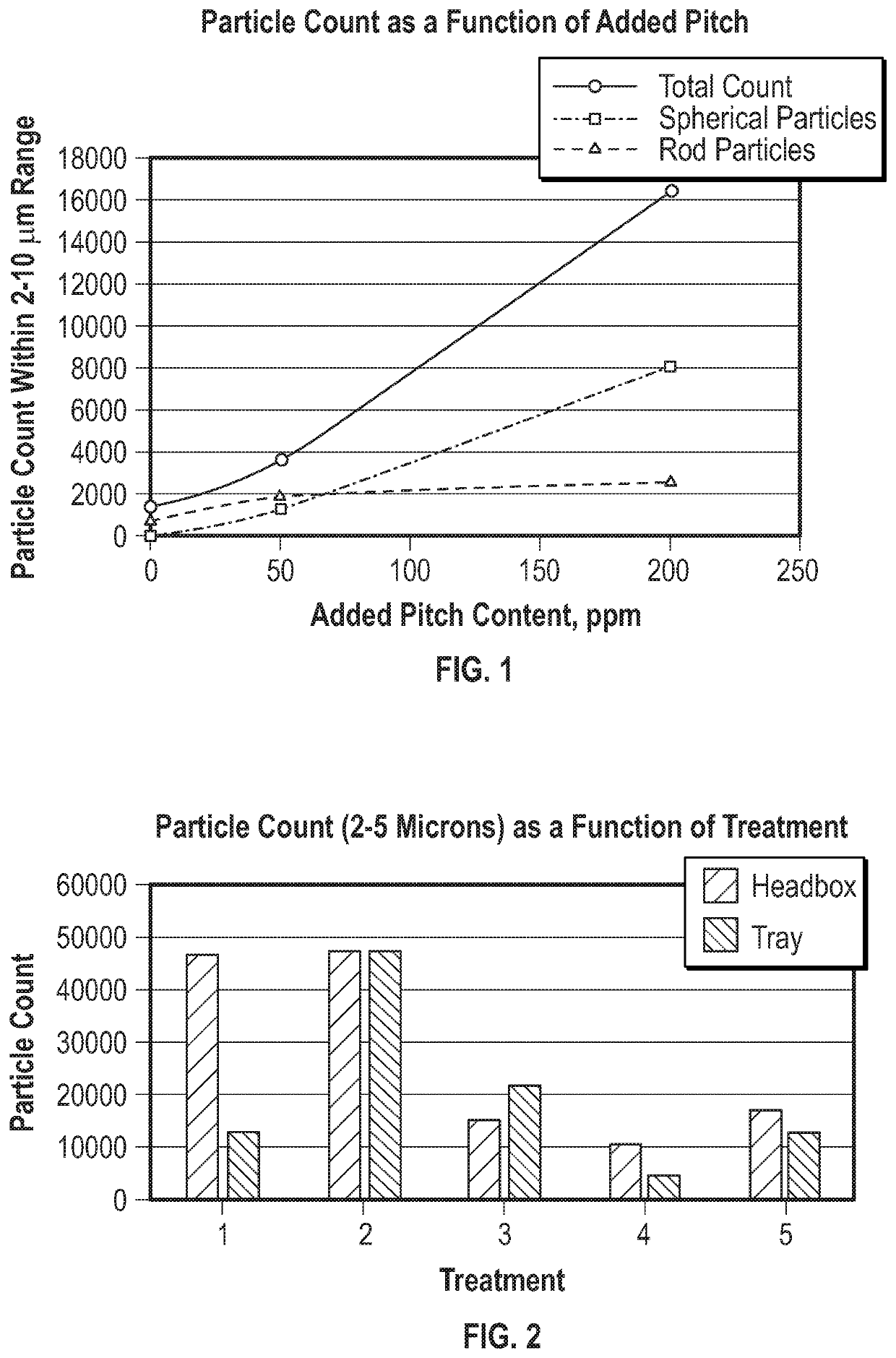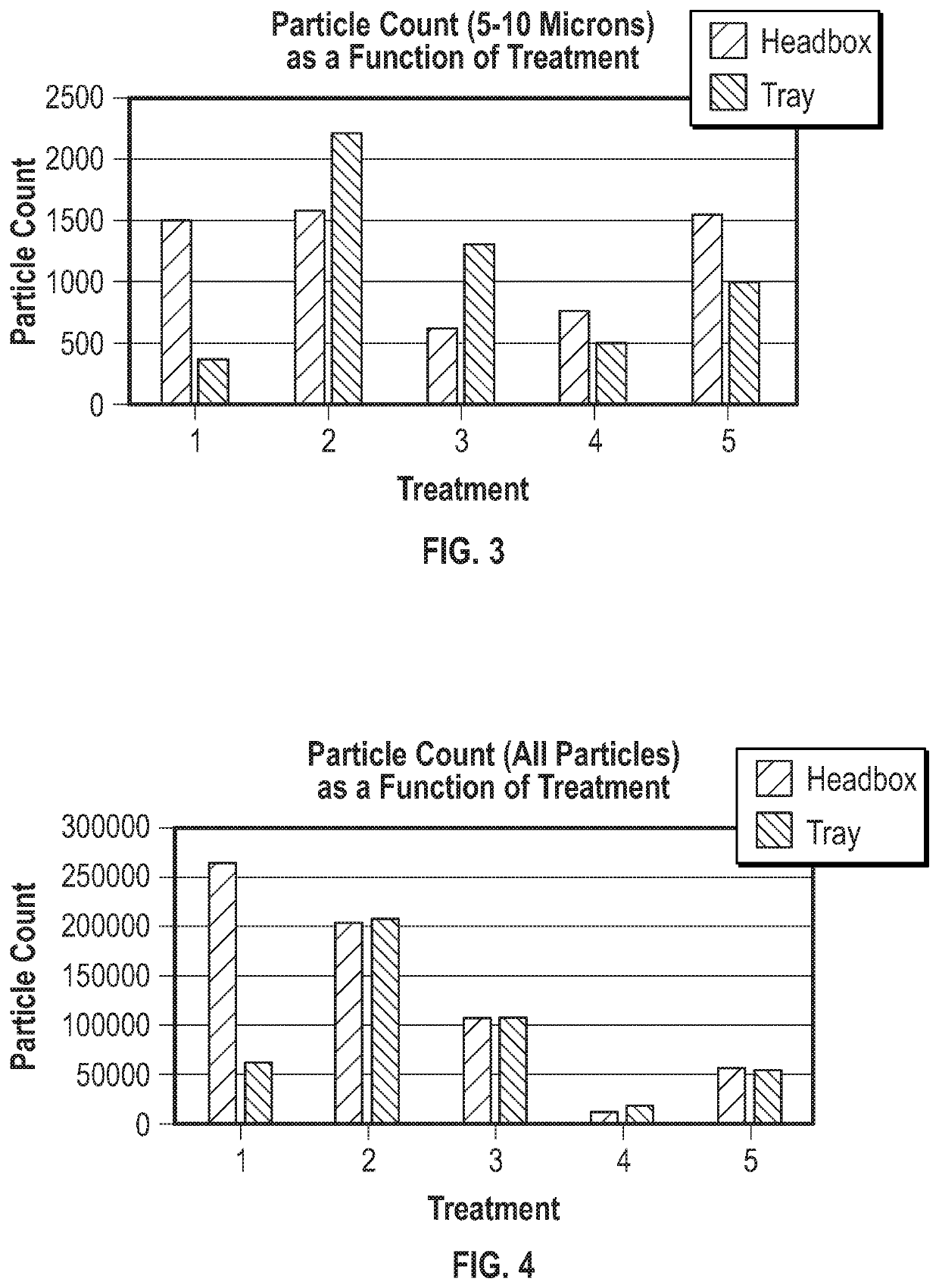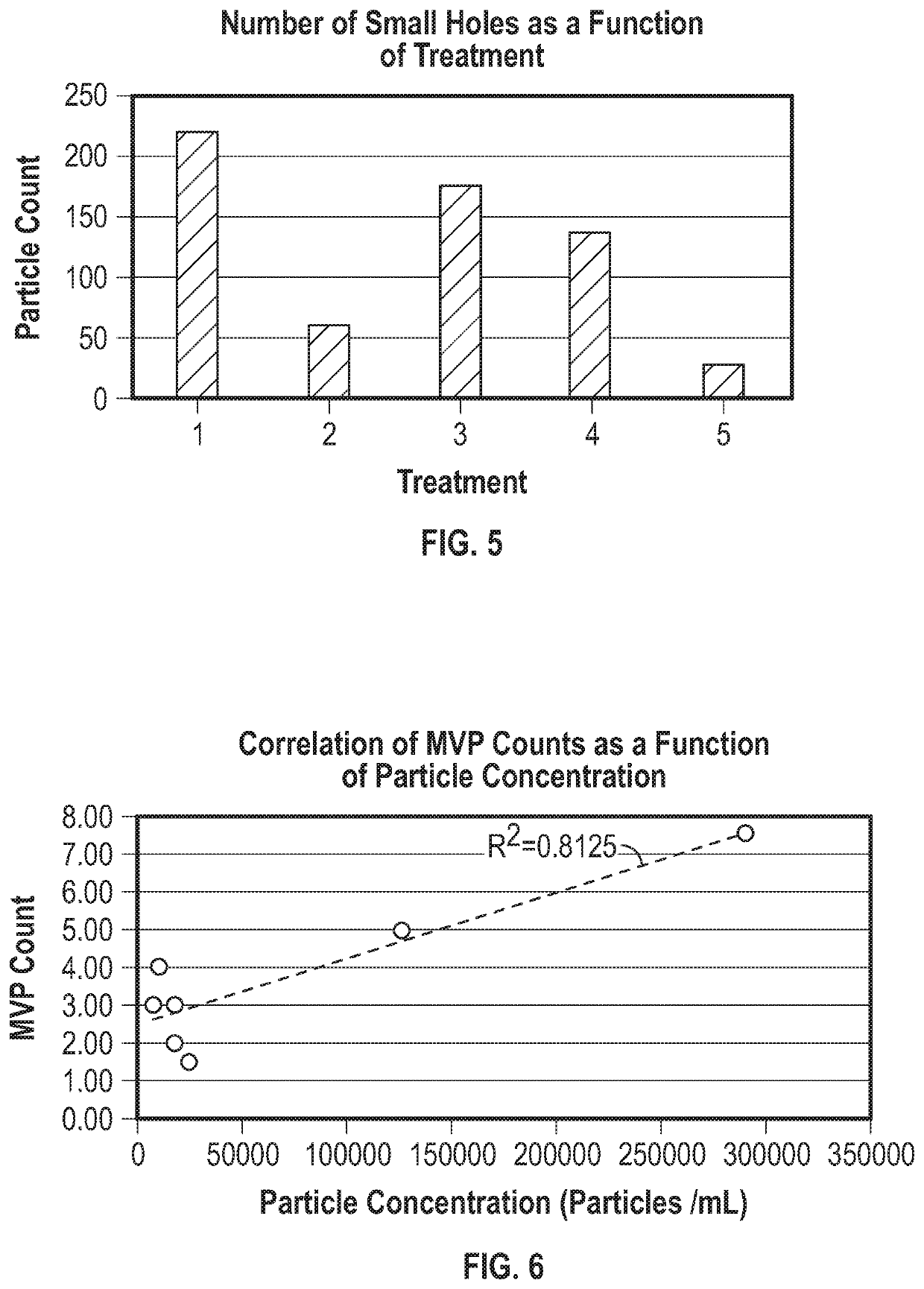Method of measuring hydrophobic contaminants in a pulp slurry or a papermaking system
a technology of hydrophobic contaminants and pulp slurry, which is applied in the direction of dispersing agent addition, instruments, image enhancement, etc., can solve the problems of increased consumption of chemical additives, hole and other defects in finished paper, and formation of deposits on the surface of papermaking equipment. , to achieve the effect of reducing the number of slurry particles
- Summary
- Abstract
- Description
- Claims
- Application Information
AI Technical Summary
Benefits of technology
Problems solved by technology
Method used
Image
Examples
example 1
[0059]Several samples were prepared using bleached Kraft pulp and synthetic pitch. Synthetic pitch was prepared by blending oleic acid, abeitic acid and Pamak TP resin. Bleached Kraft pulp slurry was prepared at 0.5% consistency. A known amount of synthetic pitch was added to the slurry and then the slurry was filtered through a 25 micron filter.
[0060]The samples included a Control (Kraft pulp slurry filtrate with no additional pitch), two samples with the same filtrate furnished with an additional 50 ppm and 200 ppm synthetic pitch respectively, and two additional samples of filtrate and 50 ppm pitch and further treated with Treatment A (hydrophobically modified polyethylene glycol) and Treatment B (polydiallyldimethylammonium chloride, i.e., PolyDADMAC). Treatment A is a dispersing agent whereas Treatment B is fixative polymer.
[0061]Evaluation of these samples shows that the total particle count increases with addition of pitch (control vs samples with 50 and 200 ppm pitch). The a...
example 2
[0067]There are several ways to define and count number of spherical particles in pulp filtrates. Pulp samples, from different mills, were mixed with synthetic pitch. The resulting slurries were filtered through a 25 micron filter and the filtrates were analyzed for the number of spherical particles. In this set of samples, “spherical” particles were counted using a “circularity” parameter. Particles with circularity of 0.66 and greater were counted as spherical. The results of this analysis is set forth below in Table 2. Table 2 includes a spherical particle count within a 2 to 5 micron range using circularity parameter at 0.66 and greater.
[0068]
TABLE 2# ofSampleSphericalNumberSample DescriptionParticles1Kraft pulp filtrate27,3002Kraft pulp filtrate + 50 ppm pitch49,5003Kraft pulp filtrate + 200 ppm pitch93,0004Kraft pulp filtrate + 50 ppm pitch + 60 ppm5,300Treatment A5Kraft pulp filtrate + 50 ppm pitch + 75 ppm6,900Treatment B
[0069]With an increase in synthetic pitch content, the...
example 3
[0070]In a paper mill setting, hydrophobically modified polyethylene glycol was utilized to control pitch levels in white water. Small (2-5 microns) and large (5-10 microns) spherical particles were monitored both in the headbox and the tray waters. Particles with circularity of 0.66 and greater were counted as spherical. These results are set forth in Tables 3, 4 and 5 and FIGS. 2, 3, and 4.
[0071]The data indicate that, with the gradual reduction of the hydrophobically modified polyethylene glycol treatment dosage from 12 lb / ton to 4 lb / ton, the number of both small and large spherical particles declines to a minimum at about a 5 lb / ton treatment level. Table 3 and FIG. 2 includes spherical, small (2-5 micron) pitch particle counts in headbox and tray filtrates.
[0072]
TABLE 3# of# ofSampleParticlesParticlesNumberTreatment / DosageHeadboxTray112 lb / ton -Talc4716813104212 lb / ton - hydrophobically modified4813348085polyethylene glycol39 lb / ton - hydrophobically modified1589522566polyethy...
PUM
| Property | Measurement | Unit |
|---|---|---|
| size | aaaaa | aaaaa |
| aspect ratio | aaaaa | aaaaa |
| aspect ratio | aaaaa | aaaaa |
Abstract
Description
Claims
Application Information
 Login to View More
Login to View More - R&D
- Intellectual Property
- Life Sciences
- Materials
- Tech Scout
- Unparalleled Data Quality
- Higher Quality Content
- 60% Fewer Hallucinations
Browse by: Latest US Patents, China's latest patents, Technical Efficacy Thesaurus, Application Domain, Technology Topic, Popular Technical Reports.
© 2025 PatSnap. All rights reserved.Legal|Privacy policy|Modern Slavery Act Transparency Statement|Sitemap|About US| Contact US: help@patsnap.com



